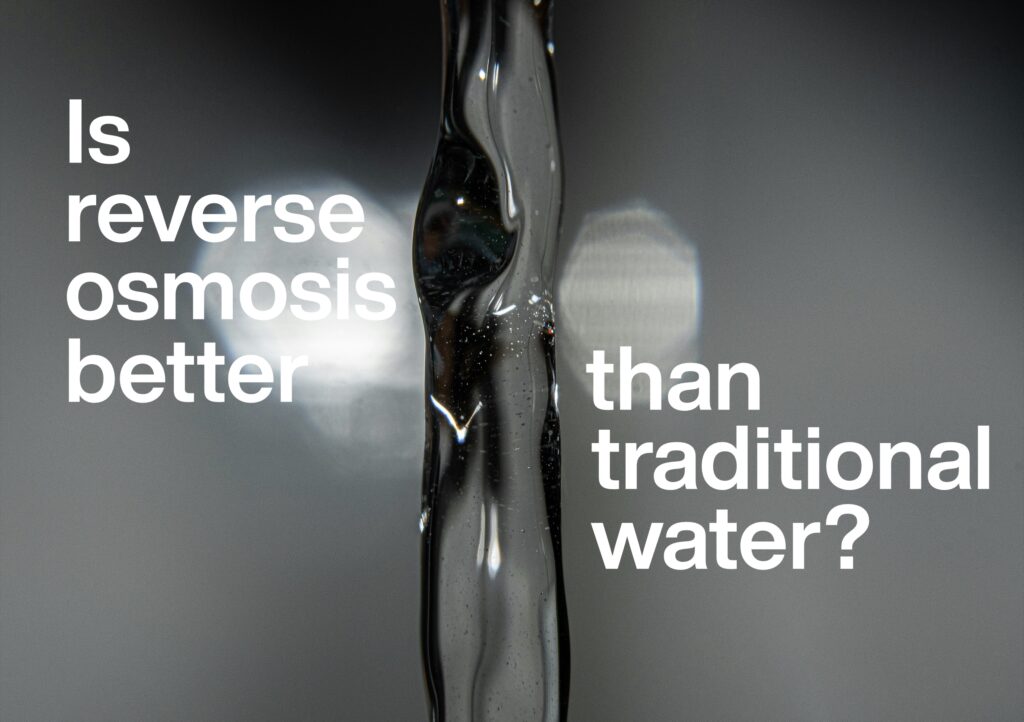Use nature to stand out in the water purifier market

The competitive market for household water purification puts players under pressure to innovate and differentiate their products. Nature’s own solution to water purification may be just what you need to make your water purifier stand out.
If you work in a water purifier company, you are probably already familiar with the constant search for a competitive edge. The global water purifier market is populated by a multitude of different brands, all trying to claim a larger share of the growing market, which is primarily driven by rapidly increasing demand in the residential segment. Even established brands are feeling the pressure to stand out.
The challenge is that the filtration methods used in most household water purifiers, such as mechanical filtration and absorption in active carbon, are – very roughly speaking – fundamentally the same methods used by the ancient Egyptians and Greeks thousands of years ago.
Today, key players in the water purifier market must innovate to strengthen their market presence. As a result, investments in product variants, new manufacturing technology, or “smart” features like IoT integration and apps have soared.
But there is a different way of standing out which is both extremely effective and taps into a strong narrative of sustainability and natural solutions. Filtration inspired by nature could be the next revolution in water purification – and it is readily available for commercial use in water purifiers.
Biology meets engineering
Some of the most important inventions of modern society were born by a convergence of physics and engineering. Technologies such as radio, computers, and space flight would not be possible without the scientific studies that led to a deeper understanding of the basic building blocks of the Universe like X-rays and electrons.
However, there is a growing awareness among innovators of the vast potential of another “toolbox” that is expanded through the science of biology, not physics. This discipline of learning from and imitating nature is known as biomimicry.
By studying plants, insects, microbes, and other living organisms, it is possible to discover ways of solving problems that have been honed to perfection over millions of years of evolution. Today, technology inspired by nature is found in everything from architecture to medicine and, indeed, water purification.
Nature’s solution to water purification
In her book, The Age of Living Machines, neuroscientist & former MIT President Susan Hockfield points out that “…even after four thousand years of refinement, water purification by distillation and filtration is too slow, too expensive, and too energy inefficient to meet our growing demands. We need dramatically new approaches to purifying water.”
Fortunately, nature has already provided the inspiration for this next revolution in water purification technology. With the abundance of water found in living organisms, scientists have long speculated that some cells have a mechanism for transporting water across cell membranes.
However, this water channel remained elusive until American scientist Peter Agre discovered the aquaporin protein in 1992. This unique protein is what allows water – and only water – to pass in and out of cells through osmosis.
From research paper to production line
Based on Peter Agre’s Nobel Prize-winning discovery, Aquaporin has developed patented methods for isolating and embedding aquaporin proteins in water filtration membranes that can be mass produced and meet industry standards. This makes it possible for water purifier manufacturers to use nature’s way of purifying water on an industrial scale.
The Aquaporin Inside® filtration technology is the world’s only drinking water purification method using biomimicry. If you are a water purifier manufacturer, this presents an opportunity to differentiate your brand and products by being among the first to utilize a completely innovative approach to water purification.
Doing so not only provides top quality water purification but also allows you to use persuasive storytelling in your marketing, which especially appeals to consumers who care about nature, sustainability, and reducing their environmental impact by using less bottled water.




